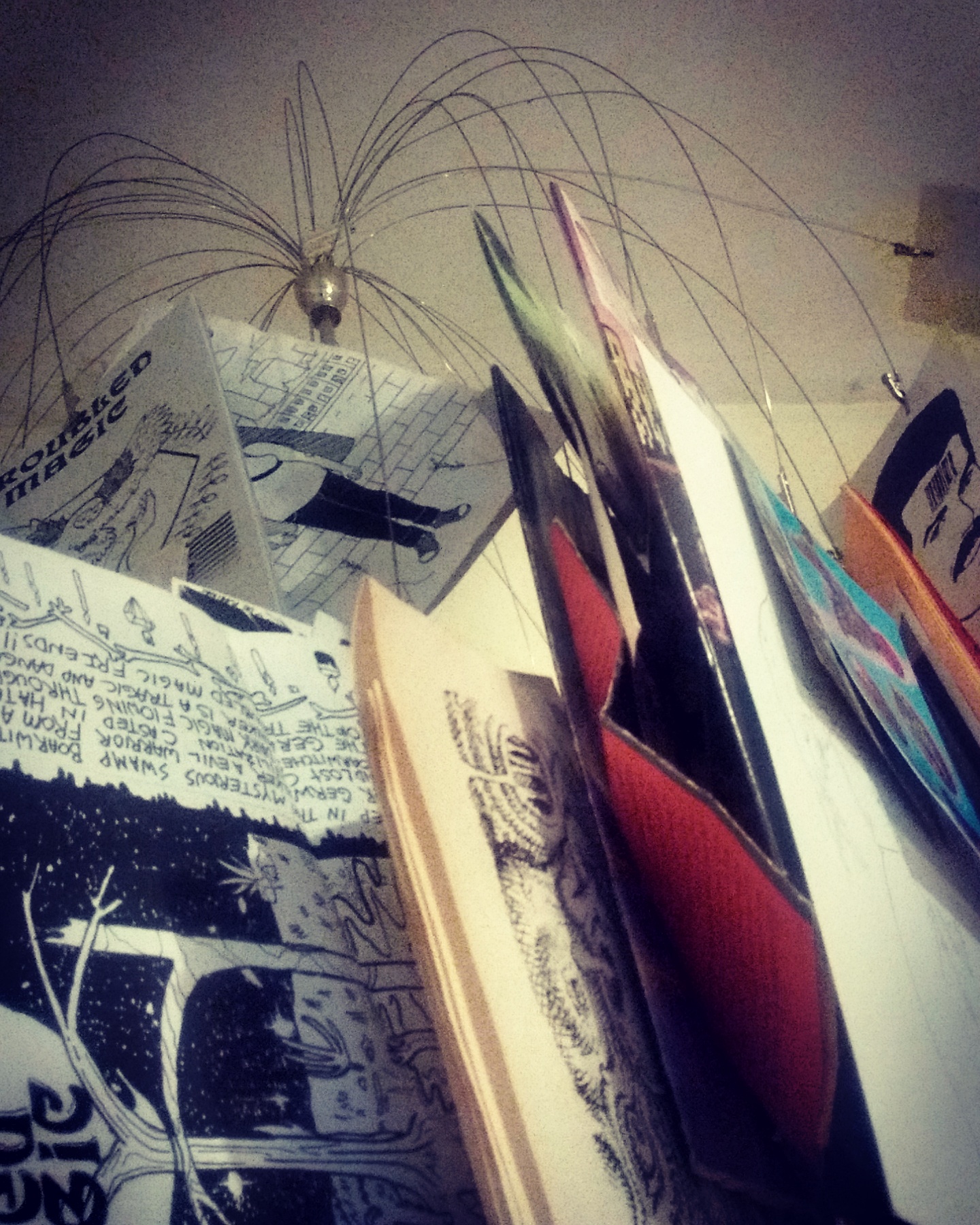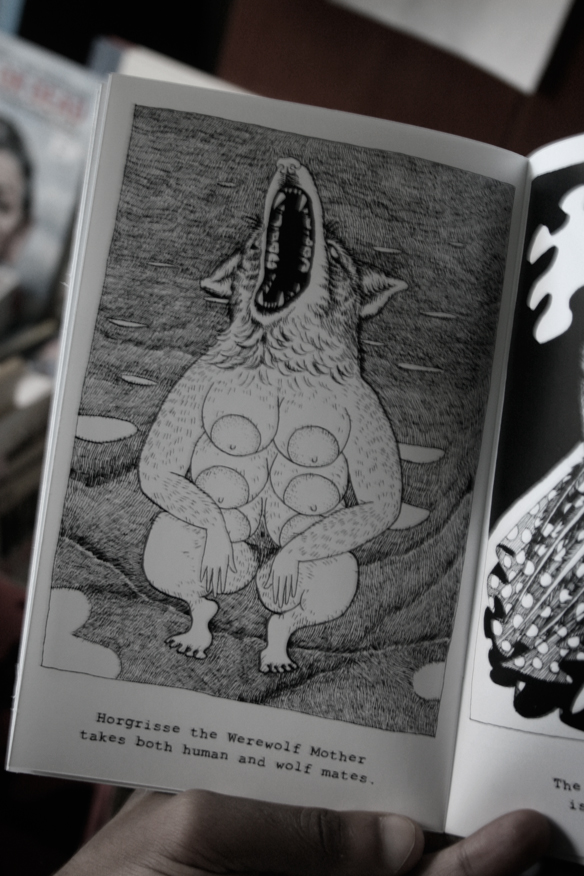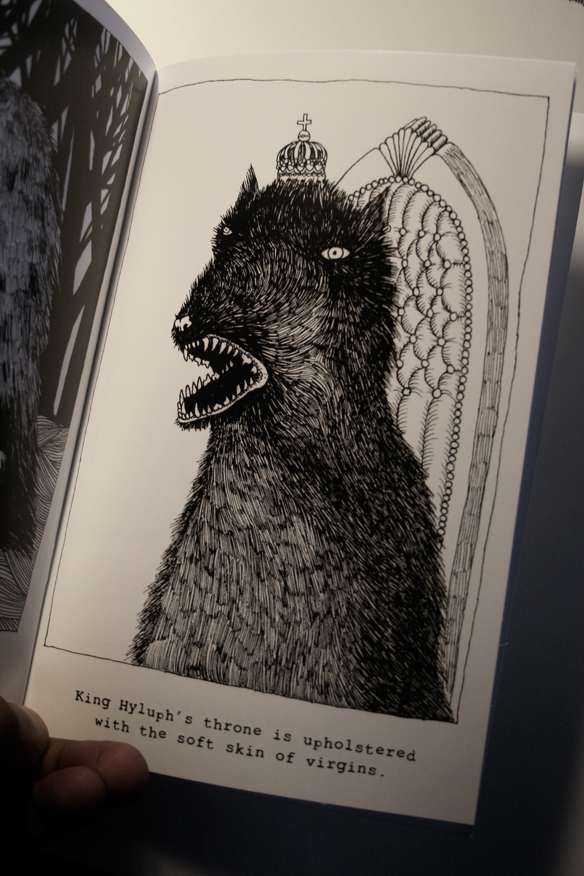AG: Concerning your works, your website bio states: “Her love affair with science burgeoned as she grew up and developed as an artist, and scientific curiosity emerged as a character in her work,” which is related to your upbringing – one of your parents was a physicist and another, a gardener. More often than not, you deploy the fantastic in your stories and multimedia works. Is there some way you could briefly discuss your work’s reconciliation of fiction (i.e. telepathy, animism, horror) with science?
JULIA: When I was a kid my dad would tell me bedtime stories about black holes, infinity, and the absolute nothing that came before the big bang. He would sometimes create talking characters out of astronomical phenomenon or internal organs. So from a really young age I started associating science with narratives, and I never shook that association. So much of the presentation of scientific research is about presenting a story too; in scientific journals there are papers that take the reader through a process that leads from a question to an solution. There are also many concepts of science and math that seem like fascinating metaphors of human relationships (like the way that matter and antimatter annihilate if they touch) or even just wonderfully zany visuals (“a black hole has no hair”). So creating visual stories about science has always come naturally to me.
I don’t know that science and sci-fi or magic are necessarily reconciled in my work, but rather I think that all of these subjects are about a similar desire to explain why the world is the way it is, and to answer questions about the unknowable. To me, physics can be absolutely magical and sometimes terrifyng. Most of the statements that physics makes about the world around us are hard for us to wrap our heads around and impossible to observe in everyday life. So it feels a bit like a fairytale or a ghost story. The story of the big bang, if you learn about all of its bizarre steps, seems like a crazy epic poem. In fact, I wrote an epic poem about the creation of the universe, translating the four main “characters” of the big bang (the four fundamental forces: electromagnetism, weak nuclear force, strong nuclear force and gravity) into the four chambers of an elk’s stomach, thereby positing that the universe was created by the hungry tummy of an enormous ungulate.
In the Beginning There Was Nothing
Have you ever heard the tale of how the REAL was rent and torn?
From a nothing quiet as an egg the universe was born.
Some call this wild story by the name of the Big Bang
But descendants of a certain Buck call it a different thang, deer.
Call it a different thang.
If you wander deep into my woods you’ll hear the forest part
For an ancient soul who played a role in how it all did start.
If you listen to his whispers, deer, well, surely you’ll be struck
By how the universe was born from hunger of a Buck, deer.
From hunger of a Buck.
First there was nothing.
And the nothing was filled with emptiness.
And the emptiness was hunger.
The hunger was so powerful that it split the nothing into two stomachs: Pull and Gut.
The hunger was SO mighty that it split Gut into Dainty and Ravenous.
And finally, as the hunger spread, it split Dainty into Weak and Light.
Those four stomachs grumbled, growled and howled like a beast.
Ravenous, pull and weak and light were itchin’ for a feast.
There weren’t no food to eat, no sir, just emptiness to munch.
And so of emptiness those tummies made the grandest lunch, deer.
They made the grandest lunch.
Digestion of the emptiness did make an awkward noise.
Like a belch, a moan, a bellow and a sweetly singing voice.
The sound, we found, was coming from a large and hairy frame.
And from the tummies’ snacking a great elk body became, deer.
An elk body became.
The Big Buck became. His body formed by the digestion of the emptiness.
He was hungry. Nay. He was voracious. And he was hot. Ever so hot.
And powered by his deep hunger, he exploded and ripped into the void.
The inflation of his body accelerated
and accelerated
and accelerated
and accelerated
and accelerated
and accelerated….
The Big Buck grew and filled the nothing with his hulking form.
His body cooled and spread; it was the calm before the storm.
The stomach Pull was grumbling and it made the Buck’s fur coil
Those hairy tangles turned to spheres and energy did roil, deer.
Oh energy did roil.
The mats of fur were fused by rumbles made by Weak and Light
And began to glow, oh what a show, oh what a magic sight.
The heat began to rise again and a white hot pulse ensued
And then those balls of elk fuzz up and flared and burst and spewed, deer.
They flared and burst and spewed.
The explosions of light blasted outward like the seeds of an angry dandelion. And those seeds landed here and there in the black, bits of the body of the buck that settled down and became what we now know to be planets. The glow of elk fur stars shone down upon these little sisters. There was steam. And tiny mouths that opened toward the light. And there was more and more becoming.
And soon a special thing occurred that ends our wondrous song.
Tiny mouths that fed upon the light grew big and strong.
The mouths soon grew a coat of fur and bodies long and lean
And when they tired of the light they hungered for the green, deer.
They hungered for the green.
And these were the first deer, my deer, who looked into the night.
And chewed the green while smiling at divine and twinkling lights.
And just like you and me, these deer were staggered and were struck
By how the universe was born from hunger of a Buck, deer.
From hunger of a Buck.
From hunger of a Buck, deer,
From hunger of a Buck.






